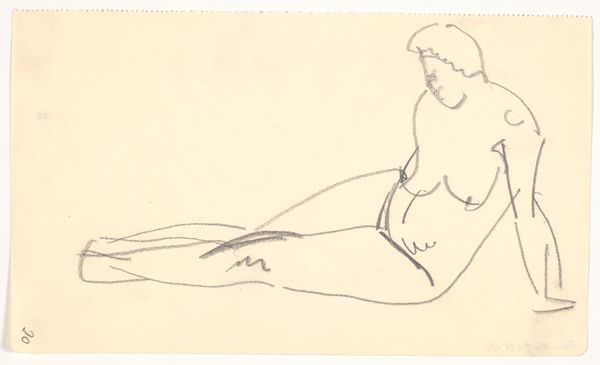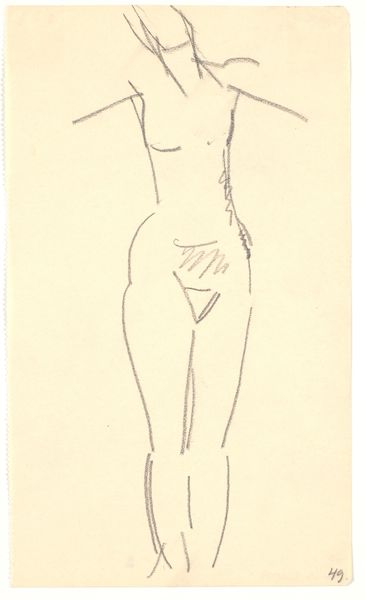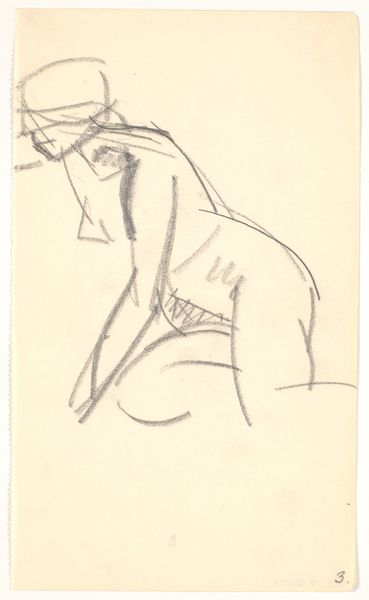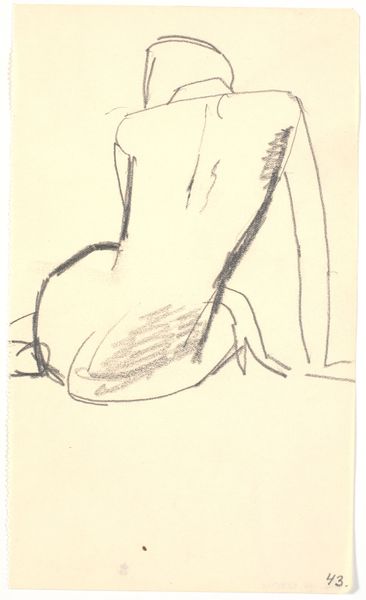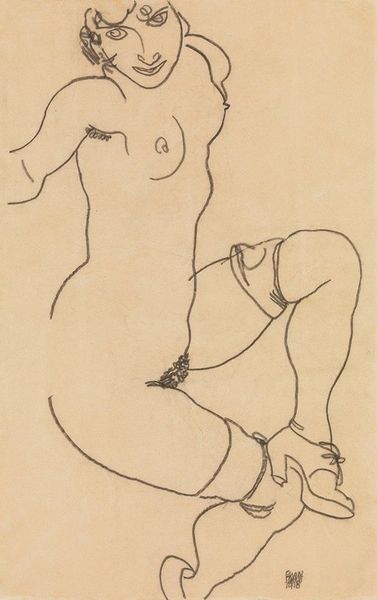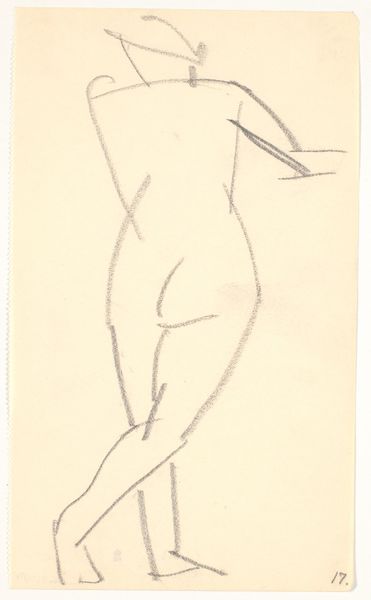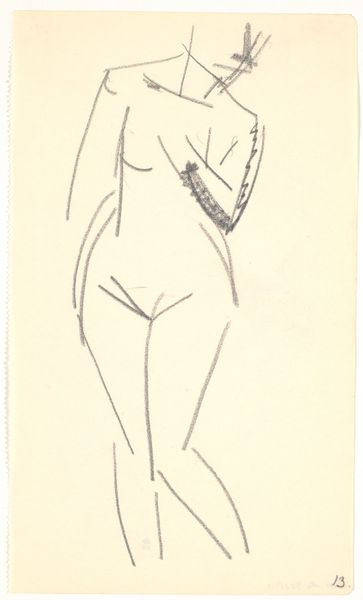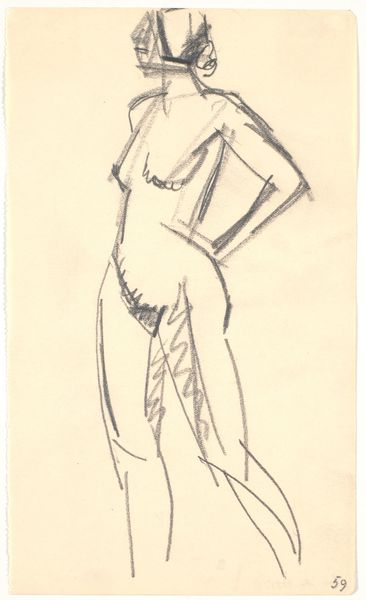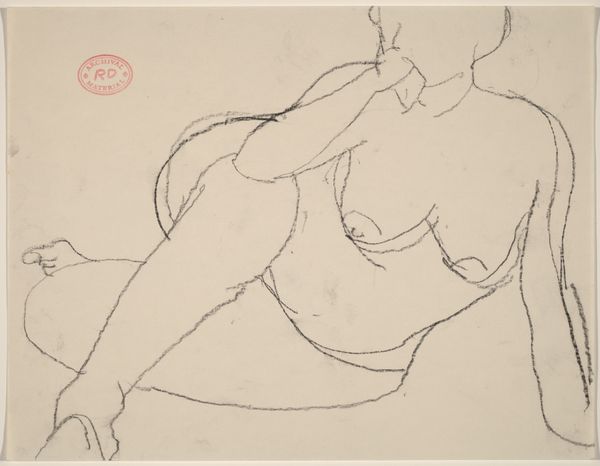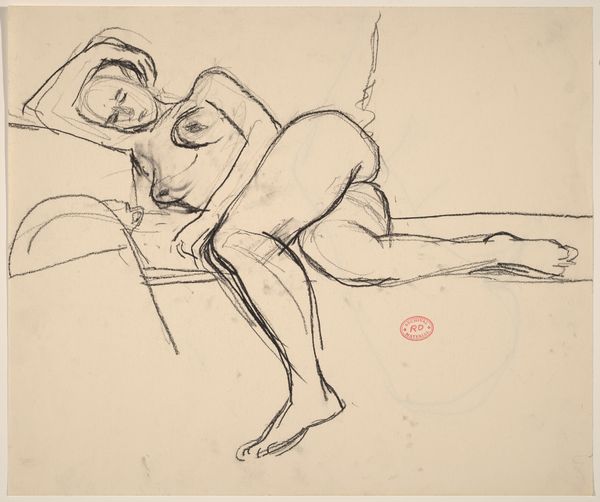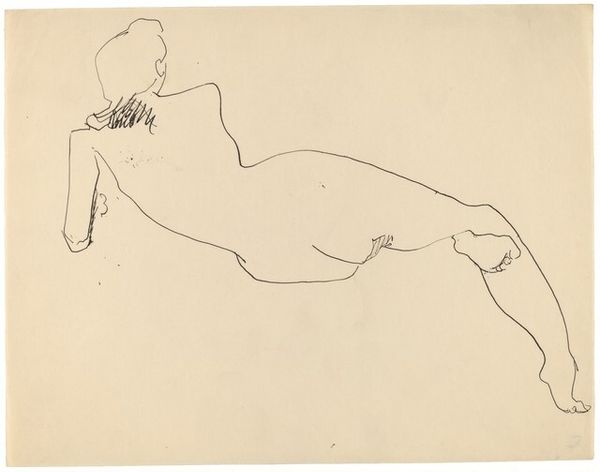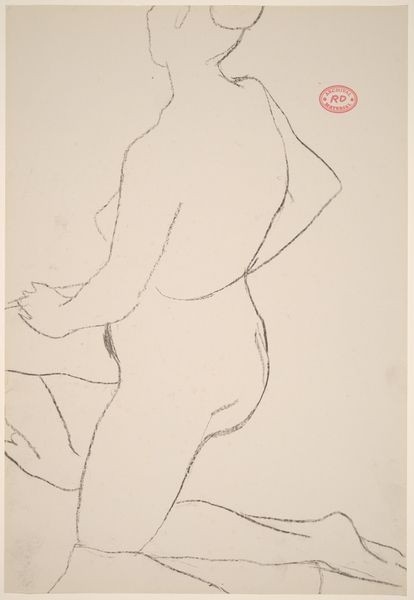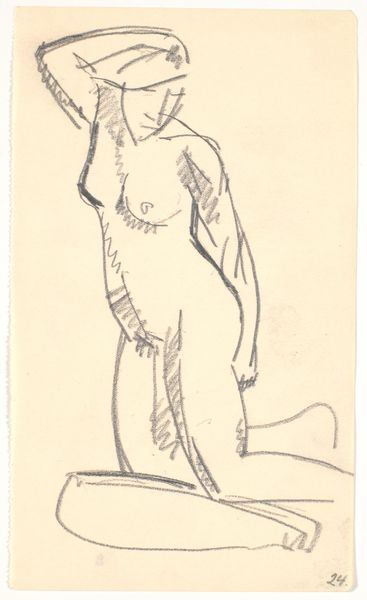
drawing, pencil
#
drawing
#
figuration
#
form
#
pencil
#
line
#
nude
Dimensions: 209 mm (height) x 124 mm (width) (bladmaal)
Curator: I'm immediately struck by the immediacy of this sketch; the subject's posture, the lack of adornment—it feels remarkably raw. Editor: Indeed. What we're looking at is "Siddende model" or "Seated Model" by Karl Isakson, dating from around 1914-1915. It's a pencil drawing currently housed at the SMK, the National Gallery of Denmark. What catches your eye, materialist? Curator: The pure economy of line is incredible! The paper and pencil are almost secondary to the act of observing. We see a quick and sure capturing of the figure’s form—nude, certainly vulnerable, maybe a hired studio model during this period? The material presence feels diminished. Editor: Precisely! Isakson would have been deeply aware of artistic trends toward simplification during this era—influenced perhaps by movements across Europe in the decade prior to World War I and the attendant reshaping of the avant-garde. It strips away sentimentality—leaving the social body and a form in question, challenging pre-conceptions. Curator: Agreed! Though what’s fascinating to me is how the absence of detail actually emphasizes the physicality of the model's pose. There is something universal in those basic shapes— almost geometric. You are left focusing on a real labor performed both by artist and model. Editor: And the socio-political implication of that? What statement do you see Isakson making? The act of depicting a nude woman wasn’t merely about formal exploration, but also about gendered representation during the time, right? Curator: Well, within the context of studio practice and material conditions, Isakson is also implicated in production--and this mode of rapid reproduction. The final work perhaps obscures or ignores questions surrounding value and commodification—it is one element in an expansive field. Editor: But there are other aspects worth examining. One aspect I appreciate is its quiet challenge to traditional academic art and also commercial visual culture through emphasizing materiality as form. Curator: Agreed. Looking again, it almost suggests that Isakson worked under constraints: material shortage perhaps, or time pressures. It serves almost as a prototype. Editor: It is very appealing; the historical implications are quite suggestive even beyond this singular composition. The ways art creates as an historical practice and in relationship to the forces of its day. Curator: Definitely, seeing it from that angle gives the work yet another powerful resonance! Editor: Exactly, let's move on to consider other details within these considerations of context and creation.
Comments
No comments
Be the first to comment and join the conversation on the ultimate creative platform.
